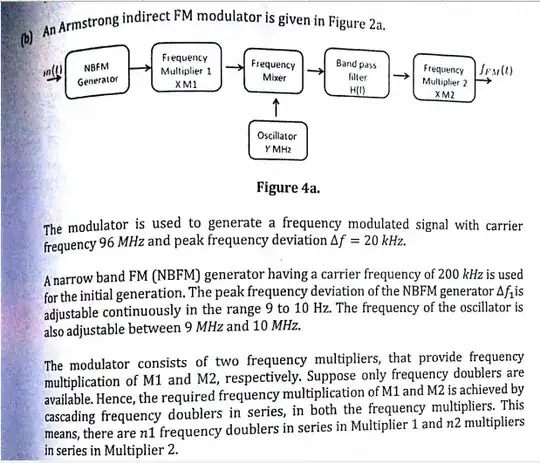The key is that the mixer does not increase the deviation, only the multipliers do that, so the required multiplication is fixed by the required output deviation and deviation available from the modulator.
The generator has about 10Hz deviation (Armstrong modulators are basically phase modulators, and this is about right!), so it needs a multiplier chain totalling ~20k/10 = 2000, but we are restricted to doublers, which means powers of two.
Best we can do is 2^11 = 2048, which means input deviation will need to be 20kHz/(2^11) which is within the 9-10Hz control range, so that's sorted.
Question now is how to distribute that 2^11 to get an LO in the 9 - 10MHz range, remember the mixer has two output sidebands and you can pick whatever works.
200k * 2^11 = 409.5Mhz, so we are clearly going to be doing high side LO because we need the mixer output to be lower frequency then its input.
So now you just play with the multiplier distribution to find something where n1+n2 = 11, and the difference between mixer input frequency and output frequency lies in the 9 to 10MHz range.
Easy marks.


